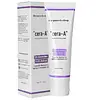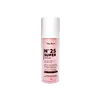What's inside
What's inside
 Key Ingredients
Key Ingredients

 Benefits
Benefits

 Concerns
Concerns

 Ingredients Side-by-side
Ingredients Side-by-side

Water
Skin ConditioningTriethylhexanoin
MaskingHyaluronic Acid
HumectantSodium Hyaluronate
HumectantGlycerin
HumectantPropylene Glycol
HumectantPanthenol
Skin ConditioningSaccharide Isomerate
HumectantCarbomer
Emulsion StabilisingTriethanolamine
BufferingPhenoxyethanol
PreservativeMoringa Oleifera Seed Oil
EmollientLimnanthes Alba Seed Oil
Skin ConditioningMacadamia Integrifolia Seed Oil
Skin ConditioningCeramide NP
Skin ConditioningPhytosphingosine
Skin ConditioningHydrogenated Lecithin
EmulsifyingPoloxamer 235
EmulsifyingRetinol
Skin ConditioningEpigallocatechin Gallate
AntioxidantAllantoin
Skin ConditioningAloe Barbadensis Leaf Juice
Skin ConditioningXanthan Gum
EmulsifyingEthylhexylglycerin
Skin ConditioningWater, Triethylhexanoin, Hyaluronic Acid, Sodium Hyaluronate, Glycerin, Propylene Glycol, Panthenol, Saccharide Isomerate, Carbomer, Triethanolamine, Phenoxyethanol, Moringa Oleifera Seed Oil, Limnanthes Alba Seed Oil, Macadamia Integrifolia Seed Oil, Ceramide NP, Phytosphingosine, Hydrogenated Lecithin, Poloxamer 235, Retinol, Epigallocatechin Gallate, Allantoin, Aloe Barbadensis Leaf Juice, Xanthan Gum, Ethylhexylglycerin
Water
Skin ConditioningGlycerin
HumectantButylene Glycol
HumectantGlycereth-26
HumectantMethyl Gluceth-20
Humectant1,2-Hexanediol
Skin ConditioningPentaerythrityl Tetraethylhexanoate
EmollientHelianthus Annuus Seed Oil
EmollientDimethyl Isosorbide
SolventMoringa Oleifera Leaf Extract
Skin ConditioningGlucosyl Hesperidin
HumectantCaprylyl Methicone
Skin ConditioningPolyglyceryl-3 Methylglucose Distearate
EmulsifyingPachyrhizus Erosus Root Extract
Skin ConditioningPolyacrylate Crosspolymer-6
Emulsion StabilisingCetearyl Alcohol
EmollientGlyceryl Glucoside
HumectantPropanediol
SolventCetearyl Olivate
Cetyl Alcohol
EmollientGlyceryl Stearate
EmollientAdenosine
Skin ConditioningSorbitan Olivate
EmulsifyingHydrogenated Lecithin
EmulsifyingHydroxypinacolone Retinoate
Skin ConditioningCaprylyl Glycol
EmollientSodium Metabisulfite
AntioxidantTocopheryl Acetate
AntioxidantAcrylates/C10-30 Alkyl Acrylate Crosspolymer
Emulsion StabilisingPentylene Glycol
Skin ConditioningTromethamine
BufferingHyaluronic Acid
HumectantSodium Hyaluronate
HumectantHydrolyzed Hyaluronic Acid
HumectantXanthan Gum
EmulsifyingTrisodium Ethylenediamine Disuccinate
Althaea Rosea Flower Extract
Skin ConditioningLevulinic Acid
PerfumingGlyceryl Caprylate
EmollientPhenoxyethanol
PreservativeEthylhexylglycerin
Skin ConditioningStearic Acid
CleansingPalmitic Acid
EmollientDipropylene Glycol
HumectantCaprylic/Capric Triglyceride
MaskingCeteareth-25
CleansingCetyl Palmitate
EmollientSorbitan Stearate
EmulsifyingPolysorbate 80
EmulsifyingCeramide NP
Skin ConditioningCarbomer
Emulsion StabilisingHydroxypropyl Cyclodextrin
MaskingMyristic Acid
CleansingCholesterol
EmollientPalmitoyl Tripeptide-5
Skin ConditioningBehenic Acid
CleansingPanthenol
Skin ConditioningPolysorbate 20
EmulsifyingArachidic Acid
CleansingCeramide Ns
Skin ConditioningSodium Benzoate
MaskingLauric Acid
CleansingCitric Acid
BufferingHydrolyzed Sodium Hyaluronate
Skin ConditioningDimethylsilanol Hyaluronate
HumectantCeramide AP
Skin ConditioningPalmitoyl Pentapeptide-4
Skin ConditioningPotassium Hyaluronate
Skin ConditioningCeramide EOP
Skin ConditioningOleic Acid
EmollientCaprylyl/Capryl Glucoside
CleansingPhytosphingosine
Skin ConditioningHydroxypropyltrimonium Hyaluronate
Ceramide Eos
Skin ConditioningTranexamoyl Dipeptide-23
BleachingSodium Hyaluronate Crosspolymer
HumectantCeramide Ng
Skin ConditioningTocopherol
AntioxidantSodium Acetylated Hyaluronate
HumectantSodium Hyaluronate Dimethylsilanol
HumectantCeramide As
Skin ConditioningN-Prolyl Palmitoyl Tripeptide-56 Acetate
Skin ConditioningCaprooyl Phytosphingosine
Skin ConditioningCaprooyl Sphingosine
Skin ConditioningBiotinoyl Tripeptide-1
Palmitoyl Tripeptide-38
Skin ConditioningPalmitoyl Tetrapeptide-10
Skin ConditioningPEG-9 Diglycidyl Ether/Sodium Hyaluronate Crosspolymer
Skin ConditioningPalmitoyl Tripeptide-1
Skin ConditioningPalmitoyl Tetrapeptide-7
Skin ConditioningAcetyl Hexapeptide-8
HumectantCopper Tripeptide-1
Skin ConditioningOligopeptide-2
Skin ConditioningWater, Glycerin, Butylene Glycol, Glycereth-26, Methyl Gluceth-20, 1,2-Hexanediol, Pentaerythrityl Tetraethylhexanoate, Helianthus Annuus Seed Oil, Dimethyl Isosorbide, Moringa Oleifera Leaf Extract, Glucosyl Hesperidin, Caprylyl Methicone, Polyglyceryl-3 Methylglucose Distearate, Pachyrhizus Erosus Root Extract, Polyacrylate Crosspolymer-6, Cetearyl Alcohol, Glyceryl Glucoside, Propanediol, Cetearyl Olivate, Cetyl Alcohol, Glyceryl Stearate, Adenosine, Sorbitan Olivate, Hydrogenated Lecithin, Hydroxypinacolone Retinoate, Caprylyl Glycol, Sodium Metabisulfite, Tocopheryl Acetate, Acrylates/C10-30 Alkyl Acrylate Crosspolymer, Pentylene Glycol, Tromethamine, Hyaluronic Acid, Sodium Hyaluronate, Hydrolyzed Hyaluronic Acid, Xanthan Gum, Trisodium Ethylenediamine Disuccinate, Althaea Rosea Flower Extract, Levulinic Acid, Glyceryl Caprylate, Phenoxyethanol, Ethylhexylglycerin, Stearic Acid, Palmitic Acid, Dipropylene Glycol, Caprylic/Capric Triglyceride, Ceteareth-25, Cetyl Palmitate, Sorbitan Stearate, Polysorbate 80, Ceramide NP, Carbomer, Hydroxypropyl Cyclodextrin, Myristic Acid, Cholesterol, Palmitoyl Tripeptide-5, Behenic Acid, Panthenol, Polysorbate 20, Arachidic Acid, Ceramide Ns, Sodium Benzoate, Lauric Acid, Citric Acid, Hydrolyzed Sodium Hyaluronate, Dimethylsilanol Hyaluronate, Ceramide AP, Palmitoyl Pentapeptide-4, Potassium Hyaluronate, Ceramide EOP, Oleic Acid, Caprylyl/Capryl Glucoside, Phytosphingosine, Hydroxypropyltrimonium Hyaluronate, Ceramide Eos, Tranexamoyl Dipeptide-23, Sodium Hyaluronate Crosspolymer, Ceramide Ng, Tocopherol, Sodium Acetylated Hyaluronate, Sodium Hyaluronate Dimethylsilanol, Ceramide As, N-Prolyl Palmitoyl Tripeptide-56 Acetate, Caprooyl Phytosphingosine, Caprooyl Sphingosine, Biotinoyl Tripeptide-1, Palmitoyl Tripeptide-38, Palmitoyl Tetrapeptide-10, PEG-9 Diglycidyl Ether/Sodium Hyaluronate Crosspolymer, Palmitoyl Tripeptide-1, Palmitoyl Tetrapeptide-7, Acetyl Hexapeptide-8, Copper Tripeptide-1, Oligopeptide-2
Ingredients Explained
These ingredients are found in both products.
Ingredients higher up in an ingredient list are typically present in a larger amount.
Carbomer is a polymer of acrylic acid. Its main role is to create a gel consistency.
A high amount of carbomer can cause pilling or balling up of products. Don't worry, most products contain 1% or less of carbomer.
Ceramide NP is a type of ceramide and formally known as ceramide 3.
Ceramides are intercellular lipids naturally found in our skin that bonds dead skin cells together to create a barrier. They are known for their ability to hold water and thus are a great ingredient for dry skin.
Ceramides are an important building block for our skin barrier. A stronger barrier helps the skin look more firm and hydrated. By bolstering the skin ceramides act as a barrier against irritating ingredients. This can help with inflammation as well.
If you would like to eat ceramides, sweet potatoes contain a small amount.
Read more about other common types of ceramides here:
Ceramide AP
Ceramide EOP
Ethylhexylglycerin (we can't pronounce this either) is commonly used as a preservative and skin softener. It is derived from glyceryl.
You might see Ethylhexylglycerin often paired with other preservatives such as phenoxyethanol. Ethylhexylglycerin has been found to increase the effectiveness of these other preservatives.
Glycerin is already naturally found in your skin. It helps moisturize and protect your skin.
A study from 2016 found glycerin to be more effective as a humectant than AHAs and hyaluronic acid.
As a humectant, it helps the skin stay hydrated by pulling moisture to your skin. The low molecular weight of glycerin allows it to pull moisture into the deeper layers of your skin.
Hydrated skin improves your skin barrier; Your skin barrier helps protect against irritants and bacteria.
Glycerin has also been found to have antimicrobial and antiviral properties. Due to these properties, glycerin is often used in wound and burn treatments.
In cosmetics, glycerin is usually derived from plants such as soybean or palm. However, it can also be sourced from animals, such as tallow or animal fat.
This ingredient is organic, colorless, odorless, and non-toxic.
Glycerin is the name for this ingredient in American English. British English uses Glycerol/Glycerine.
Learn more about GlycerinHyaluronic acid is naturally found in healthy skin. It is a humectant, meaning it draws moisture to your skin.
This ingredient helps hydrate, soothe, and protect the skin.
What makes hyaluronic acid so hydrating? It has the capacity to bind or hold large amounts of water.
Fun fact: It is already naturally found in our bodies, such as the fluids of our eyes and our joints.
Studies find this ingredient to have anti-inflammatory and anti-microbial properties. This can help speed up wound-healing.
Hyaluronic acid can be irritating if the molecule has a low-molecular weight, or if the molecules are small.
One study found low-molecular weight hyaluronic acid to be pro-inflammatory, meaning some people may experience irritation. This is because our bodies use hyaluronic acid in the wound-healing process to signal to our bodies, via irritation, that something needs healing.
The same study found high-molecular weight hyaluronic acid to be anti-inflammatory.
These are some other common types of Hyaluronic Acid:
Learn more about Hyaluronic AcidHydrogenated Lecithin is created from the hydrogenation of lecithin (a group of phospholipids). Hydrogenation is a chemical reaction between hydrogen and another element.
This ingredient is an emollient and emulsifier. As an emollient, it helps soften skin by trapping moisture within. As an emulsifier, it prevents oil and water ingredients from separating.
Panthenol is a common ingredient that helps hydrate and soothe the skin. It is found naturally in our skin and hair.
There are two forms of panthenol: D and L.
D-panthenol is also known as dexpanthenol. Most cosmetics use dexpanthenol or a mixture of D and L-panthenol.
Panthenol is famous due to its ability to go deeper into the skin's layers. Using this ingredient has numerous pros (and no cons):
Like hyaluronic acid, panthenol is a humectant. Humectants are able to bind and hold large amounts of water to keep skin hydrated.
This ingredient works well for wound healing. It works by increasing tissue in the wound and helps close open wounds.
Once oxidized, panthenol converts to pantothenic acid. Panthothenic acid is found in all living cells.
This ingredient is also referred to as pro-vitamin B5.
Learn more about PanthenolPhenoxyethanol is a preservative that has germicide, antimicrobial, and aromatic properties. Studies show that phenoxyethanol can prevent microbial growth. By itself, it has a scent that is similar to that of a rose.
It's often used in formulations along with Caprylyl Glycol to preserve the shelf life of products.
Phytosphingosine is a phospholipid naturally found in our skin as a building block for ceramides.. It helps moisturize, soothe, and protect skin.
Phytosphingosine contributes to your skin's natural moisturizing factor (NMF). The NMF is responsible for hydration, a strong barrier, and plasticity. Our NMF decreases with age. Increasing NMF leads to more healthy and hydrated skin.
Studies show products formulated with NMF ingredients help strengthen our skin's barrier. Having a healthy skin barrier reduces irritation and increases hydration. Our skin barrier is responsible for having plump and firm skin. It also helps protect our skin against infection, allergies, and inflammation.
Fun fact: Phytosphingosine is abundant in plants and fungi.
More ingredients that help boost collagen in skin:
Learn more about PhytosphingosineSodium Hyaluronate is hyaluronic acid's salt form. It is commonly derived from the sodium salt of hyaluronic acid.
Like hyaluronic acid, it is great at holding water and acts as a humectant. This makes it a great skin hydrating ingredient.
Sodium Hyaluronate is naturally occurring in our bodies and is mostly found in eye fluid and joints.
These are some other common types of Hyaluronic Acid:
Learn more about Sodium HyaluronateWater. It's the most common cosmetic ingredient of all. You'll usually see it at the top of ingredient lists, meaning that it makes up the largest part of the product.
So why is it so popular? Water most often acts as a solvent - this means that it helps dissolve other ingredients into the formulation.
You'll also recognize water as that liquid we all need to stay alive. If you see this, drink a glass of water. Stay hydrated!
Learn more about WaterXanthan gum is used as a stabilizer and thickener within cosmetic products. It helps give products a sticky, thick feeling - preventing them from being too runny.
On the technical side of things, xanthan gum is a polysaccharide - a combination consisting of multiple sugar molecules bonded together.
Xanthan gum is a pretty common and great ingredient. It is a natural, non-toxic, non-irritating ingredient that is also commonly used in food products.
Learn more about Xanthan Gum